Digital payments have become a fundamental part of modern life, and schools are no exception. As more families adopt mobile banking and cashless lifestyles, the demand for secure, efficient, and user-friendly school payment systems continues to grow. Gone are the days of collecting crumpled notes in class registers or issuing paper receipts by hand. Today’s schools require payment solutions that are fast, transparent, and designed for digital convenience.
For decision-makers in primary and secondary schools, choosing the right payment method isn’t just about keeping up with technology – it’s about aligning with the evolving needs of parents, students, and administrators. In 2025, schools across South Africa are navigating complex challenges, including ensuring financial accountability, safeguarding student well-being, and reducing administrative workload, all while meeting the expectations of increasingly tech-savvy families.
QR payments, card terminals, and mobile apps are leading the charge, but each comes with its own pros, cons, and ideal use cases.
So, which one is the best fit for your school?
In this guide, we break down the top three digital payment options to help you make a confident, informed choice that supports your school’s journey into the future.
Why Move to Digital Payment Methods?
Before we compare payment methods, it’s essential to understand why schools are pivoting towards cashless systems. Here are a few compelling reasons:
- Convenience: Digital payments reduce the need for physical cash handling, benefiting both schools and parents.
- Safety: Having less cash on-site means a reduced risk of theft or mismanagement.
- Efficiency: Automated systems streamline school administrative tasks, reducing the workload and improving processes such as fee collection and financial reporting.
- Transparency: Digital payments provide clear transaction trails, reducing the likelihood of disputes.
Globally, the adoption of QR payments is accelerating. According to Juniper Research, the number of QR code payment users globally is projected to reach over 2.2 billion by 2025, up from approximately 1.5 billion in 2020, accounting for nearly 29% of all mobile phone users. This rapid growth underscores the rapid adoption of QR-based transactions as a standard payment method worldwide.
With these advantages in mind, it’s time to evaluate the three main contenders in the cashless school payment landscape.
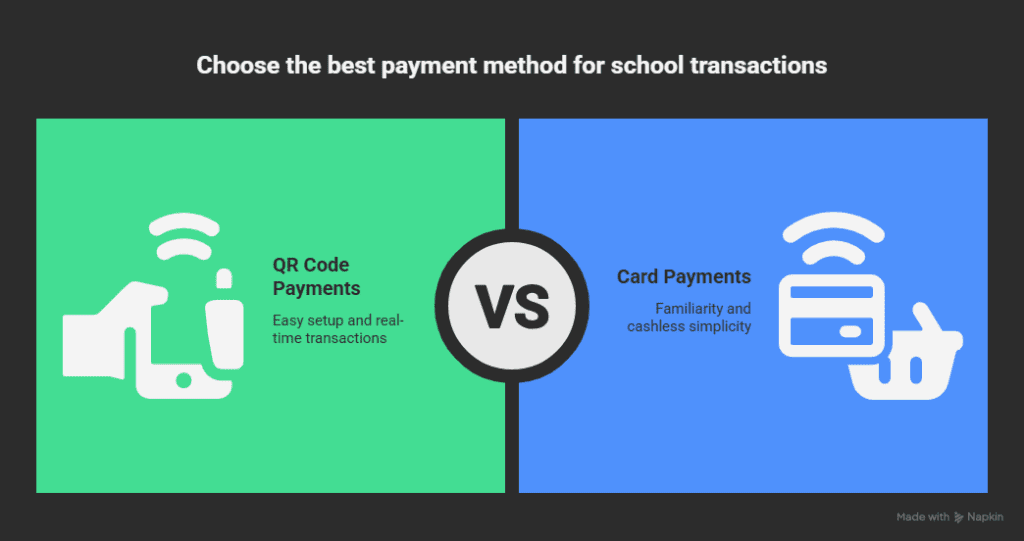
Table of Contents
Option 1: QR Payments
QR payments are growing in popularity worldwide, and their simplicity and cost-effectiveness make them an ideal choice for schools aiming to digitise quickly.
How It Works
A unique QR code is generated for a specific product or service, such as school lunches, field trips, or uniform purchases. Parents scan this code using their smartphone’s camera or a supported payment app, and the transaction is processed instantly.
Schools typically use established QR payment providers such as SnapScan, Zapper, or similar local services. These providers generate secure, payment-linked QR codes for specific products or services, such as lunches, uniforms, or events. When parents scan these QR codes using their banking apps or the provider’s dedicated apps, transactions are processed immediately and securely, ensuring streamlined reconciliation with school accounting systems. In contrast, generic QR code generators simply encode basic payment information and usually require additional manual processes for verification, security, and transaction management.
Pros of QR Payments
- Ease of Setup: QR payment codes can be easily generated using online tools with little upfront investment.
- Accessibility: Most smartphones support QR scanning via their default cameras or banking apps, removing the need for additional software or hardware.
- Instant Transactions: Transactions are completed virtually instantly, ideal for quick purchases such as tuckshop snacks or fundraiser tickets.
- Adaptable for Events: Temporary QR codes can be generated for pop-up sales, school festivals, or donation drives.
Cons of QR Payments
- Smartphone Dependency: Both parents and students need access to a smartphone with internet access, which may not be feasible for all families.
- Limited Offline Functionality: QR payments rely on internet connectivity to process transactions.
- Limited Oversight: Many QR payment systems don’t have built-in features for tracking or categorising expenses.
- Minimal Brand Customisation: Many generic QR tools lack integration with school branding or ecosystem.
Best for: Small, everyday purchases such as lunches or merchandise at school events.
Option 2: Card Payments
Debit and credit cards have long been a cornerstone of digital payments. Their wide acceptance and familiarity make them a practical and comfortable step toward digital adoption in schools.
How It Works
Card payment devices are installed on-site at payment counters, allowing transactions via contactless NFC, chip-and-pin, or swipe. They support credit, debit, and prepaid cards, offering flexibility for a wide range of users.
Pros of Card Payments
- Familiarity: Most parents already use cards and are comfortable with this payment method.
- Cashless Simplicity: Eliminates the need to carry cash and simplifies large transactions like tuition fees.
- Universal Accessibility: Works with most debit and credit cards, provided the school uses a well-integrated payment processor.
- Speed at POS: Tap-and-go payments are fast and efficient, particularly in well-equipped canteens.
Cons of Card Payments
- Hardware Costs: Schools need to invest in bank card payment terminals, provide training and ensure ongoing maintenance.
- Security Concerns: Without robust security measures in place, card information is susceptible to fraud or data breaches.
- Limited Student Use: Younger students may not have access to personal bank cards, limiting their ability to make purchases directly.
- Bank Dependency: Transaction costs and processing fees vary by bank and payment processor.
Best for: Tuition payments and large expenses like uniforms or extracurricular fees.
Option 3: Payment Apps
Mobile payment apps are revolutionising how schools handle transactions by offering an all-in-one solution tailored to educational environments. These platforms streamline fees, purchases, and communication, making them one of the most comprehensive digital tools available to schools today.
How It Works
Parents and, in some cases, students, download the school’s preferred payment app, which links directly to individual student profiles. From a single platform, they can pay fees, order meals, manage aftercare payments, and track spending. Funds are typically loaded via bank transfers, debit or credit cards, or digital wallets.
Pros of Payment Apps
- All-in-One Management: Apps consolidate all payment types—fees, lunches, events, and more into a single platform.
- Expense Tracking: Parents can view spending, set alerts, and top up balances.
- Community Engagement: Apps often include features such as announcements, reminders, and event calendars, fostering a sense of connection within the school community.
- Student-Friendly Access: Payment apps can integrate with student cards or IDs, allowing students to make secure, contactless payments even without personal smartphones or tablets.
- Digital Receipts: All transactions are logged with date and time stamps, reducing disputes.
- Integration Capabilities: Apps can integrate with student information systems, accounting tools, and even access control systems.
Cons of Payment Apps
- Tech Literacy Required: May require onboarding and training for staff or parents.
- Subscription Fees: Many app providers charge schools a fee or take a commission per transaction.
- Initial Setup Time: Implementing a full-featured system can take a few weeks, including data migration and user training.
- Data Privacy Concerns: Mobile payment apps store sensitive user information, requiring robust data security protocols and compliance with data protection regulations such as South Africa’s POPIA.
Best for: Comprehensive payment management, covering both large fees and everyday transactions, including meal orders, aftercare, and extracurricular activities. Ideal for multi-campus schools or institutions ready to invest in the long-term benefits of a fully cashless ecosystem.
Apps designed for school environments offer the most comprehensive solution for managing digital transactions and communication. If you’re exploring available platforms, here’s a helpful list of 7 cashless school apps in South Africa to compare.
Feature Comparison Table
To make it easier to compare QR payments, card transactions, and school payment apps side-by-side, we’ve summarised their key attributes in the table below. Use this comparison as a quick reference when evaluating which system best fits your school’s needs.
| Feature | QR Payments | Card Payments | Payment Apps |
| Hardware Required | Yes | Yes | No (if BYOD) |
| Real-Time Processing | Yes | Yes | Yes |
| Student Usability | Moderate | Low | High |
| Expense Tracking | Limited | Moderate | High |
| Setup Cost | Low | Medium | Medium to High |
| Ideal For | Tuckshop. events | Tuition, uniforms | All school payments |
| Integration | Minimal | Moderate | Extensive |
| Parental Controls | No | No | Yes |
Which Payment Option Is Best for Your School?
There’s no one-size-fits-all answer. The right choice depends on your school’s unique needs, budget, and priorities. Here’s a quick recap to help guide your decision.
| Payment Method | Best For | Drawback |
|---|---|---|
| QR Payments | Small-scale transactions like tuckshops | Smartphone and internet dependency |
| Card Payments | Tuition fees and large purchases | Hardware costs and limited student use |
| Payment Apps | All-in-one payment management | Set-up costs and tech dependency |
Factors to Consider When Choosing a Payment System
Each school has different needs based on size, budget, technical readiness, and parent expectations. Below are key considerations that can help guide your selection process.
- Budget: Does your school have the funding for card readers or app licensing?
- Infrastructure: Is your internet reliable enough to support real-time payments?
- User Readiness: Are parents tech-savvy? Will staff need training?
- Integration Needs: Do you want to link with student IDs or your existing accounting systems?
- Scalability: Can the system scale with your school’s growth?
- Reporting Requirements: How important are financial reports and audit trails to your admin team?
- Student Equity: Will all students have equal access to the chosen technology?
How to Get Started with Digital Payments
Are you ready to take the first step towards a cashless campus? Start by assessing your school’s specific requirements:
- What types of payments need to be handled? Think tuition fees, tuckshop purchases, or event tickets.
- What infrastructure is already in place? Assess your current tech setup to determine the ease of integration.
- What level of user support can you offer? Ensure you have initiatives in place to guide parents and staff through the new system. For schools considering payment apps, partnering with providers that offer onboarding support and custom features is key.
If you’re leaning towards QR payments, start small—perhaps with a tuckshop pilot or event registration and scale from there. Many schools find this a low-risk way to test adoption before committing to a larger system.
Why Schools Are Embracing the QR Payment Revolution
In 2025, schools aren’t just upgrading their tech; they’re upgrading the way their communities experience convenience, trust, and financial transparency. From a single QR code on a tuckshop counter to an integrated payment app with real-time alerts, the shift to digital is not just coming—it’s here.
And with platforms like Eezipay, transitioning to digital payments is straightforward. Tailored for South African schools, Eezipay enables seamless management of fees, lunch purchases, and more—all within a single platform. Whether you’re implementing QR payments for quick transactions or deploying a comprehensive app for your school’s ecosystem, Eezipay simplifies the process.
Eezipay supports multiple payment formats: QR codes, cards, and mobile apps within one flexible platform. This versatility ensures that your school can adopt digital payments at its own pace, with tools customised to your operational needs.
Ready to take the next step?
Modernising your school’s payment processes is both simple and impactful. Whether you’re introducing QR code payments for quick transactions or implementing a comprehensive cashless strategy, Eezipay offers tailored solutions to meet your school’s unique needs.
Designed specifically for South African schools, Eezipay’s all-in-one platform simplifies the management of fees, lunch purchases, event ticketing, and more. By supporting multiple payment formats—including QR codes, cards, and mobile apps—Eezipay ensures a seamless transition to digital payments at your own pace, enhancing convenience for parents and reducing administrative burdens for staff.
So, why wait?
Experience the benefits of a streamlined, secure, and efficient payment system today. Request a demo now or visit our website to discover how Eezipay can transform your school’s financial processes and support your journey toward a fully cashless campus.

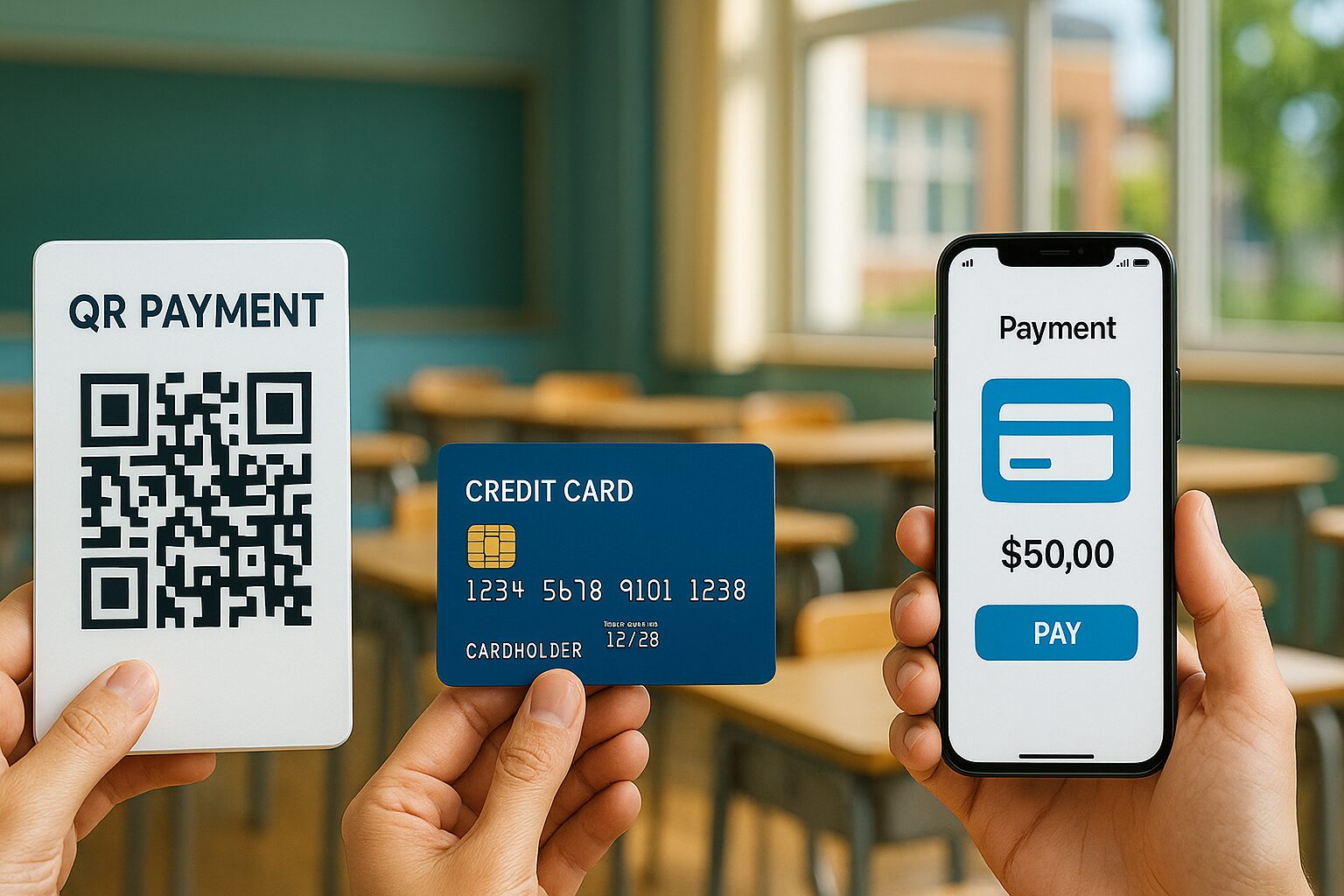
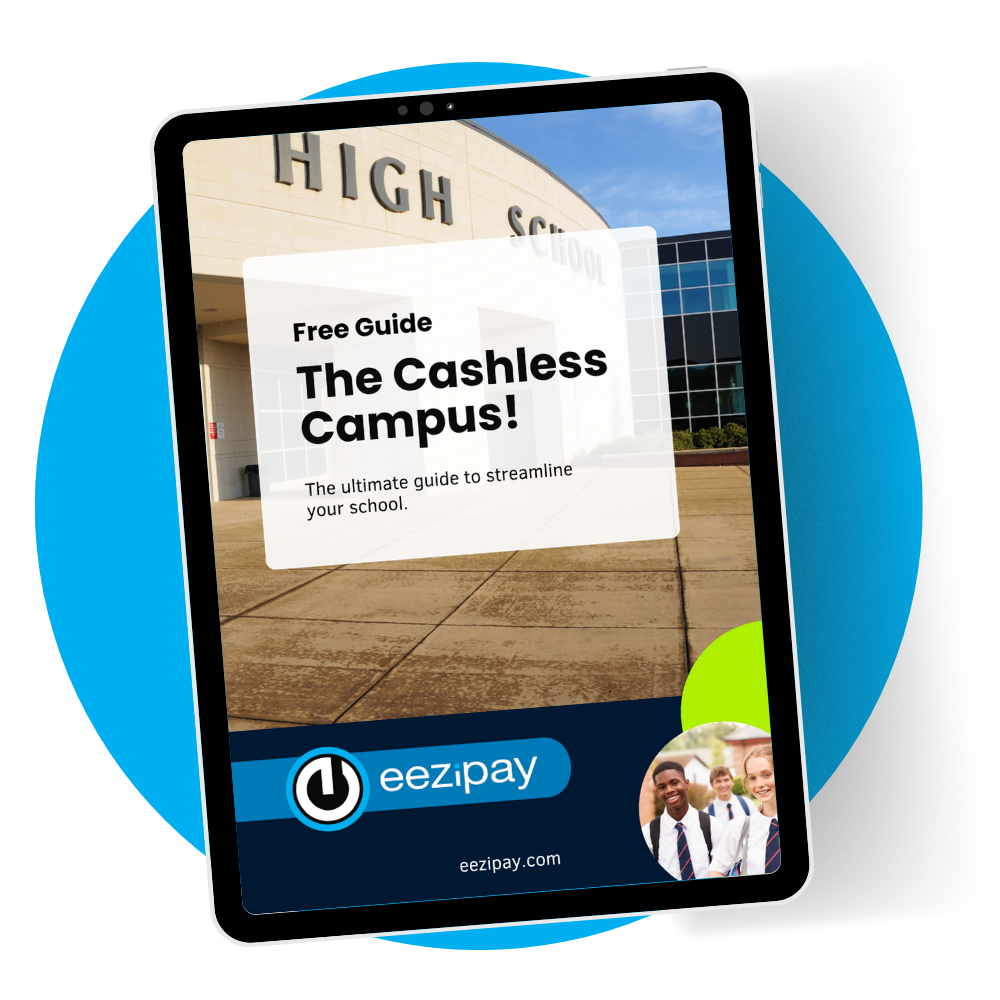

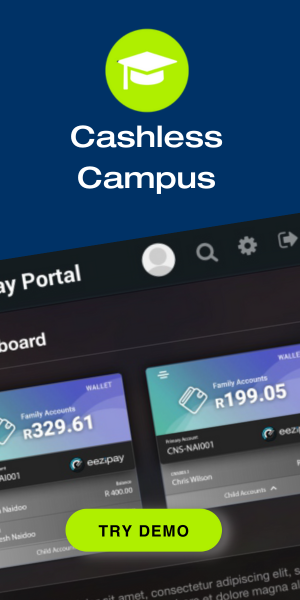
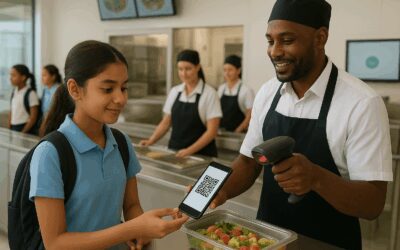
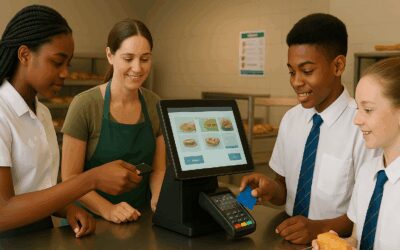
![How QR Code Payments Are Powering a Brighter Future for Universities [2025]](https://eezipay.com/wp-content/smush-webp/2025/05/QR-Codes-Payments-For-Universities-400x250.png.webp)
